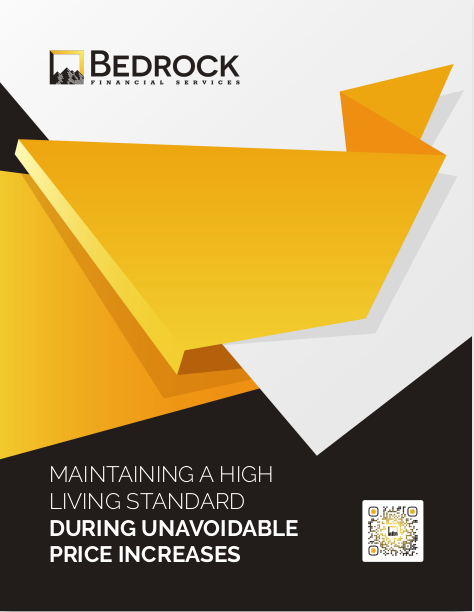Key Takeaways
-
Before adding any leads into your CRM, you must establish structure, strategy, and segmentation to prevent future chaos and wasted effort.
-
The time you spend setting up workflows, fields, and automation today directly impacts how many policies you close tomorrow.
Start with the End in Mind
The reason most CRMs fail to deliver results isn’t because the software is bad—it’s because the setup was rushed. Before importing a single lead, ask yourself: What is the goal of this CRM in my sales process? Is it tracking calls? Managing renewals? Automating follow-ups?
Your CRM should act as a control tower, not a cluttered inbox. Every section should have a purpose and every action should drive toward a close. If it doesn’t, don’t add it yet.
Define Your Sales Stages Clearly
You can’t measure progress if the path is undefined. Most insurance agents benefit from establishing clear sales stages like:
-
New Lead
-
Contacted
-
Quoted
-
Follow-Up Scheduled
-
Application Submitted
-
Closed – Won
-
Closed – Lost
These stages should mirror how you actually work—not an idealized version. If your sales process includes extra steps like underwriting checks or third-party coordination, include those too.
When you define these stages early, your reporting, automation, and task creation all work in harmony.
Customize Your Data Fields
Default fields rarely match what you need in insurance sales. Before uploading a lead list, customize your CRM to include the fields you actually use, such as:
-
Preferred Contact Time
-
Policy Renewal Month
-
Lead Source
-
Current Carrier
-
Household Members
-
Product Interest (e.g., life, final expense, annuity)
Avoid collecting unnecessary data. The more fields you have, the harder it becomes to act on them. Keep only what you plan to use.
Build Tags and Segments First
One of the fastest ways to lose control of a CRM is by skipping segmentation. Tags are how you personalize at scale. Set up meaningful tags before adding leads:
-
State or Region
-
Type of Insurance Interested In
-
Cold vs Warm vs Referral
-
Medicare-Eligible
-
Needs Call Back
Later, you can automate emails, campaigns, or even task triggers based on tags. But only if you set this up ahead of time.
Set Up Your Task Workflow
Once you know your sales stages and lead types, you can build task workflows to match. Think of this as pre-scheduling your to-do list based on lead behavior.
Here’s what that might look like:
-
New Lead: Create task “Call within 10 minutes”
-
Quoted: Create task “Follow-up in 2 days”
-
Application Submitted: Create task “Check status in 3 business days”
This automation ensures no lead gets ignored simply because your day got busy.
Draft Your Email and Text Templates
Your future self will thank you for this step. Set up your templates for:
-
First contact email
-
Appointment confirmation
-
Missed call follow-up
-
Policy renewal reminder
-
Birthday or milestone message
Templatizing these now means faster responses, better consistency, and less mental effort later. Plus, it sets the tone for your brand.
Create Lead Scoring Rules
Not all leads deserve the same attention. Lead scoring lets you prioritize who gets callbacks today and who gets nurtured over time.
You can assign points for actions like:
-
Opening an email (+5)
-
Clicking a quote link (+10)
-
Booking an appointment (+15)
-
Not responding after 3 texts (–5)
When your CRM scores leads automatically, you know where to focus without guesswork.
Connect Your Calendars and Phone Systems
Your CRM shouldn’t live in isolation. Connect it with your:
-
Google or Outlook calendar (to auto-log appointments)
-
Phone system or softphone (to track calls and text history)
-
Email client (to centralize communications)
Integration prevents tasks from falling through the cracks and gives you a timeline of all interactions in one place.
Automate the Obvious
Once you’ve set your stages, tags, and fields, you can automate tasks that happen every time:
-
Send a welcome email after a new lead is added
-
Trigger a reminder text before appointments
-
Assign a tag when a certain product is selected
-
Create a renewal task 11 months after policy issue
These automations save hours each week and ensure no step is skipped.
Document Your Workflow
If you’re a solo agent, this helps you stay consistent. If you’re growing a team, it’s even more essential. Create a short document or screen recording that walks through:
-
What happens when a new lead is added
-
How each sales stage should be handled
-
Which templates to use for which lead type
Even if you’re the only one using it today, you won’t be forever. A documented system means smoother handoffs and faster onboarding.
Clean Up Old or Duplicated Leads Before You Start
If you’re migrating from another system or using a purchased list, run a cleanup first:
-
Remove duplicates
-
Eliminate outdated info
-
Standardize phone/email formatting
Dirty data leads to automation breakdowns, missed tasks, and miscommunications. It’s better to have 300 clean leads than 3,000 chaotic ones.
Establish a Weekly Maintenance Habit
CRMs are not “set it and forget it.” Block time every Friday or Monday to:
-
Review pipeline reports
-
Check for stalled leads
-
Update stages or tags
-
Archive cold leads that haven’t responded in 60+ days
This keeps your system lean and effective, and prevents buildup that slows your growth.
Give Yourself a Test Run
Before you go live with your entire book of business, test your CRM setup with 5-10 leads. Walk them through your new stages, automations, and tasks.
This soft launch will highlight anything that’s missing, broken, or inefficient. It’s better to discover those issues now than after importing thousands of leads.
Use Analytics to Spot Gaps Early
After a few weeks of real use, review your CRM analytics:
-
Where are most leads dropping off?
-
Which sales stage is taking the longest?
-
Are your emails getting opened?
Use this feedback to improve scripts, update templates, or refine your follow-up timing. Your CRM is only as strong as the decisions it enables.
Let Your CRM Work for You, Not on You
If it takes more time to manage your CRM than to close business, something’s off. The goal of this setup phase is to let the system do the heavy lifting:
-
Tasks should be automated.
-
Follow-ups should be triggered.
-
Communication should be logged.
All of this is possible, but only if you spend the first 7–10 days building a strong foundation before flooding it with data.
Why Setup Defines Your Sales Future
It’s tempting to jump right in and “see what happens,” but in 2025, speed without clarity equals chaos. You wouldn’t drive a car without a steering wheel, so don’t build a business without a system.
Take the time now to:
-
Define how you want to sell
-
Design your CRM to support that
-
Test before you go live
When you’re ready to scale, your CRM won’t slow you down—it’ll accelerate everything.
If you’re looking for a partner to help you grow with structure, automation, and actual sales results, we’re here for you. At Bedrock Financial Services, we equip independent agents with smarter tools and clearer strategies to turn systems into revenue. Sign up today and see what happens when everything starts working with you—not against you.







